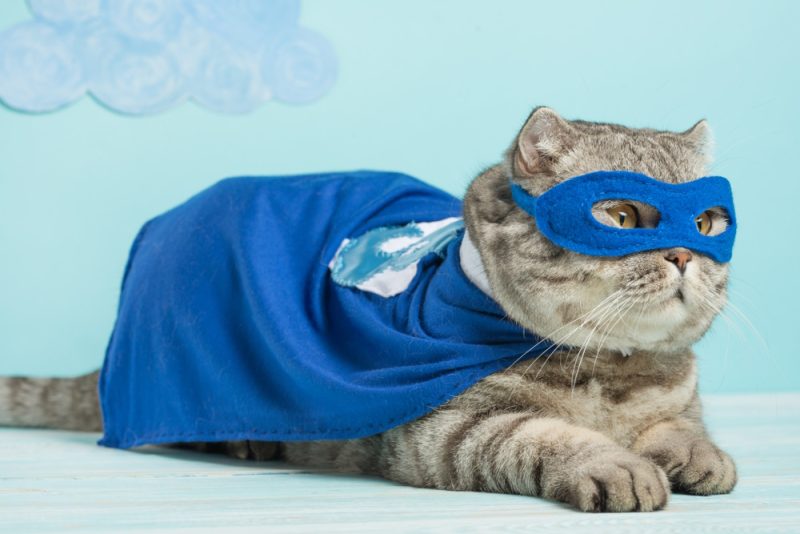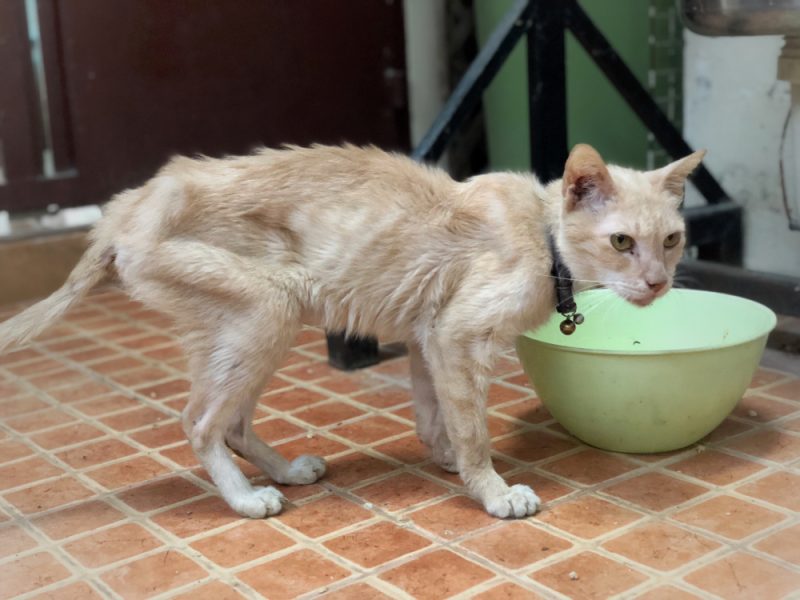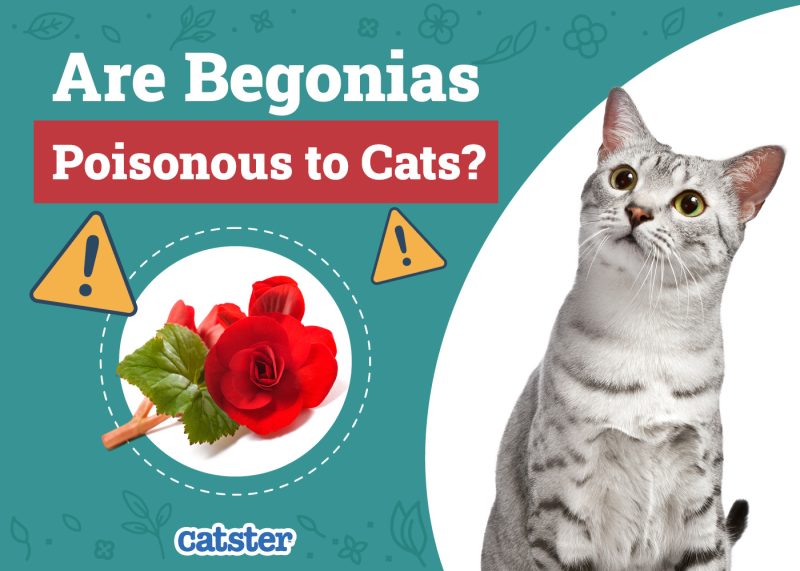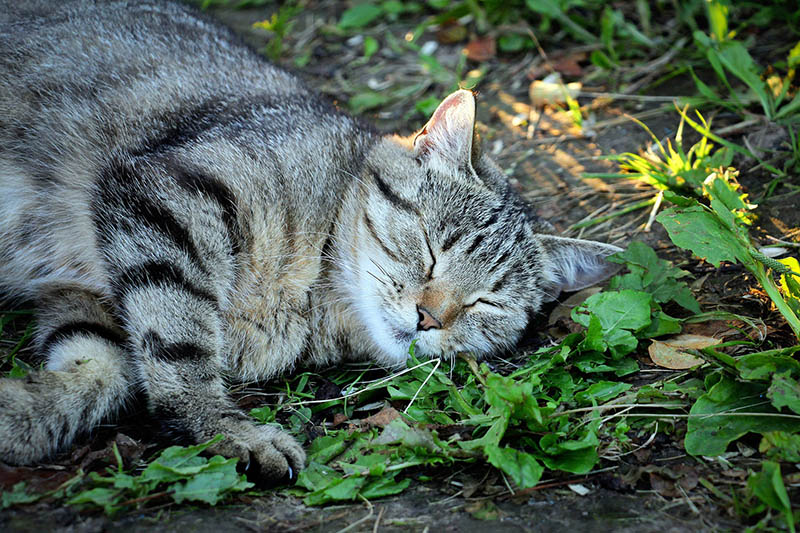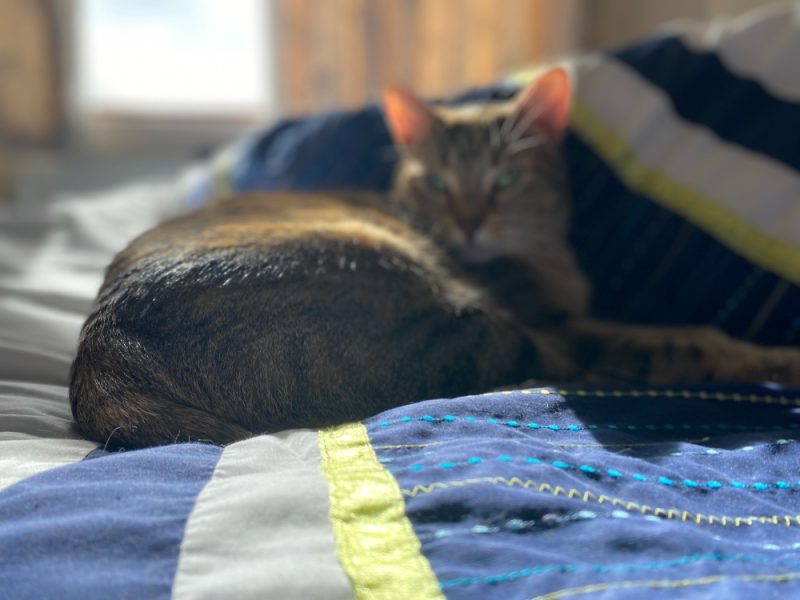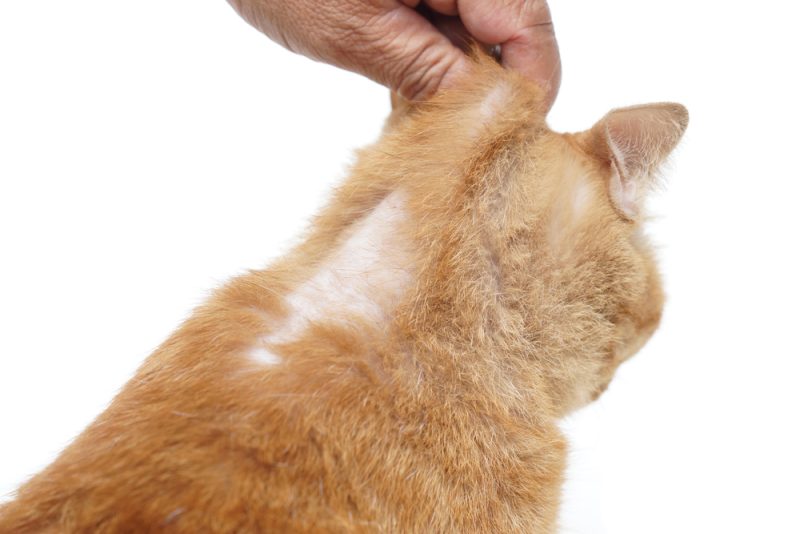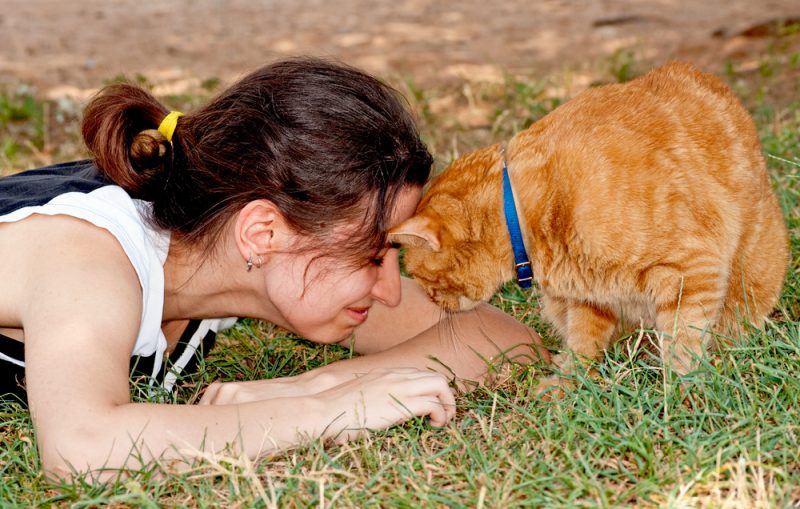Moving always has its hassles, and downsizing only adds to the stress. Figuring out how to consolidate adds tough decisions to an already challenging process. With all the activity surrounding the move, it’s easy to forget how it might affect your cat.
A change to a smaller home can be particularly stressful for cats. Alongside a new, strange space, they have less of it to explore and enjoy, giving them an avenue for frustration, boredom, and unwanted anxious behaviors. If you’re gearing up for a move with pets in tow, we’ll show you nine easy tips to help your cat adjust to a smaller space.

The 9 Tips for Adjusting Your Cats to a Smaller Space in Your New Home
1. Set Up a Dedicated Cat Room in Both Homes
The activity and clutter can make the moving process stressful enough before your cat gets to the new house. For your sake and theirs, it’s best to remove them from the equation entirely and give them a closed-off room where they can hang out until they’re ready to leave.
In the old home, set up an empty room after you have boxed up and removed everything you plan to move. Give your cat food bowls, litter boxes, cat trees, scratching posts, and toys to keep them distracted and relaxed. You can even add a few empty moving boxes to give them hiding places.
Set up a similar dedicated room for your cat in the new home. Since the space will look, feel, and smell unfamiliar, providing a few comfort items that have your scent, such as a blanket or clothes, can provide some relief.
Looking for toys that will cater to the many needs of your cat? The Hepper Hi-lo Cat Scratcher is one of our favorite cat products, and it will encourage your cat to get active. Its clever three-angle design offers multiple ways for your cat to climb, stretch, and exercise. Made of a sturdy plywood base and a replacement cardboard insert, this scratcher is an option that cats can enjoy for years to come. If your cat requires a little encouragement for self-play, the Hepper Catnip Mice Toy Set is a fantastic choice for their instinctual needs. Made with natural, bite-resistant hessian fabric and filled with organic catnip. Cats can satisfy their natural prey instincts while getting the physical activity they need to thrive. At Catster, we've admired Hepper for many years, and decided to take a controlling ownership interest so that we could benefit from the outstanding designs of this cool cat company!
Image
Product
Details
Great for Exercise
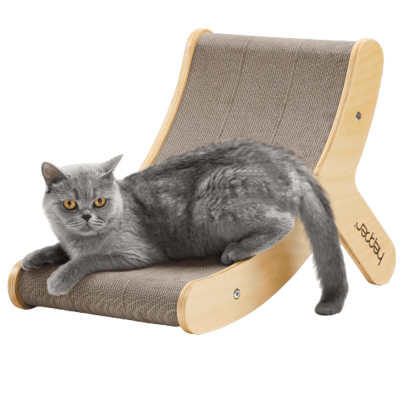
Hepper Hi-Lo Cat Scratcher
Check Price
Encourages Self-Play
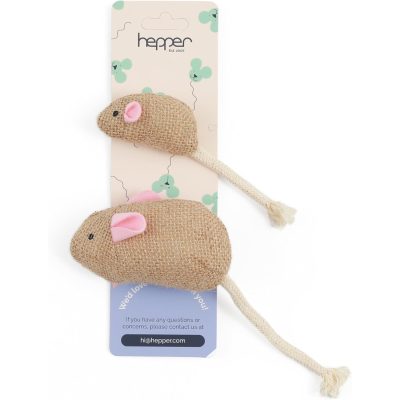
Hepper Catnip Mice Toy Set
Check Price
2. Provide Safe Hiding Places and Slowly Open the House Up
With a novel environment inside and outdoors, your cat may hesitate to look around the new home. Be patient and let them work at their own pace. It may take several days for them to feel comfortable.
In the meantime, you can arrange the house to be as accommodating as possible. Block off unsafe nooks and crannies where they might hide and become trapped and keep hazardous or fragile materials out of reach. Put up window covers if you notice any stressful outside stimuli like loud noises or neighborhood animals, and provide enough boxes and other hiding places if your cat gets scared.
You can entice your cat to explore with treats or enrichment devices in new spaces. They may still be too uncertain to come out of their space, but your cat should become more comfortable and willing to explore as the home develops more of your scent.
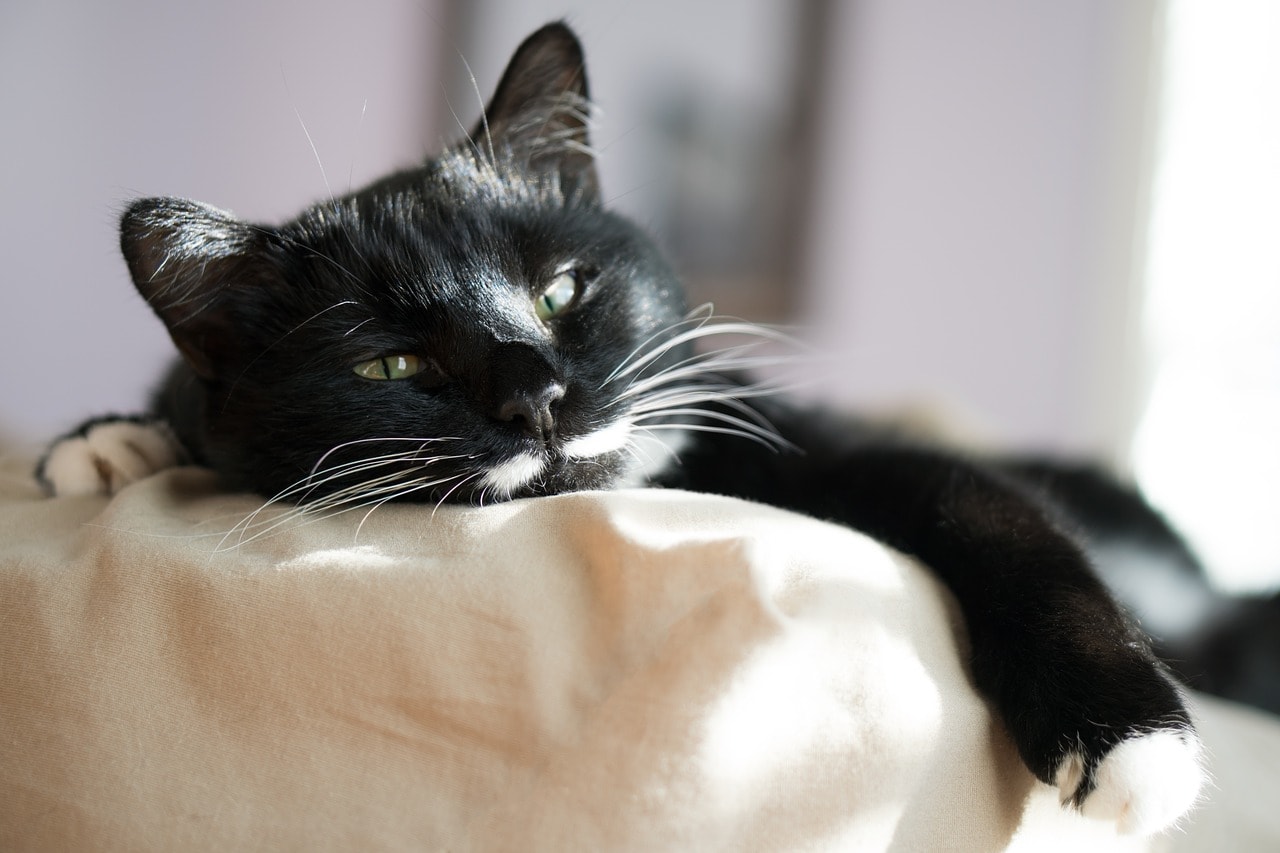
3. Build a Cat Climbing Wall
A climbing wall is ideal when you want to provide enrichment but can’t take space away from the rest of the room. Unlike a bulky cat tree occupying a corner, cat climbing shelves let you take full advantage of only vertical space, maximizing the area for your pet to exercise even in a smaller room. Your cats can also use high-up places to escape when stressed.
Cat climbing walls are fun to design but require a few considerations for a smaller space. Alongside wall-mounted shelves, include suction cup window shelves to optimize the setup and give your cat a place to look at the outdoor action.
You may want to use bridges over entryways if you have climbing platforms on either side. Otherwise, you could randomly walk into the room just as your cat is bounding across the doorway, causing you to catch a face full of fur.
Cat Climbing Walls in Apartments
If your smaller space is an apartment you’re renting, you won’t want to create numerous holes in the walls to patch later. Instead of mounting the climbing components directly to the wall, attach them to a large sheet of plywood.
You can then mount this backing board to the wall with only a few screws going into the studs. As an upgrade, you can use pegboard backing and peg hooks to mount the shelves, making the wall customizable on the fly. When it’s time to move out of the apartment, you’ll only have a few anchor holes to patch.
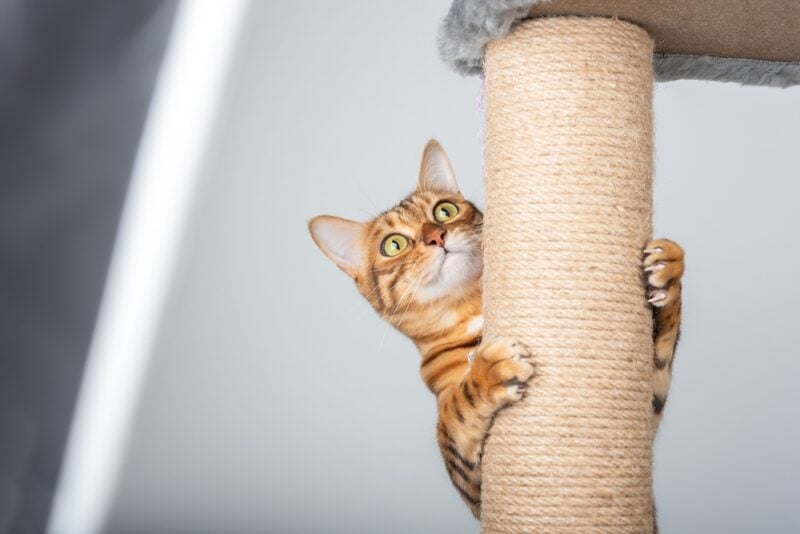
4. Set Up a Bird Feeder Outside the Window
A larger home gives cats space to run around and get out as much energy as they desire. When they move to a smaller home, you’ll have to find novel ways to keep them from becoming bored. A cat climbing wall is the best start, but you can also add interest by extending the inside space with an outdoor bird feeder.
Set up a cat perch in the window to let your cat watch an ever-changing array of wildlife. Install the bird feeder at least 6 feet away from the cat’s perch to keep the birds from being scared away. Since squirrels and predatory outdoor cats are a persistent threat around feeders, ensure it is in an open space and elevated at least 10 feet off the ground.
However, keep an eye on your cat as well, as they may become frustrated looking at birds while not being able to employ their hunting instincts, or get stressed if there are neighboring cats patrolling the area. This option will not work for all cats.
5. Maintain the Routine
Control what you can control. Cats find comfort in the familiar and predictable, and although you can’t do much about the setting, you can provide some stress relief with a consistent routine.
Keep the feeding schedule the same, and play with your cat as you normally would in the old house. Most importantly, give them loads of affection to ensure they know you are always there for them.
6. Keep the Home Tidy
A tinier space should be a tidier space, and cats need as much room as possible to get in their daily exercise. The flurry of moving can lead to loads of clutter and tough choices about what to keep and what to remove, but the sooner you get through it, the easier it will be for your cat to enjoy the new home.
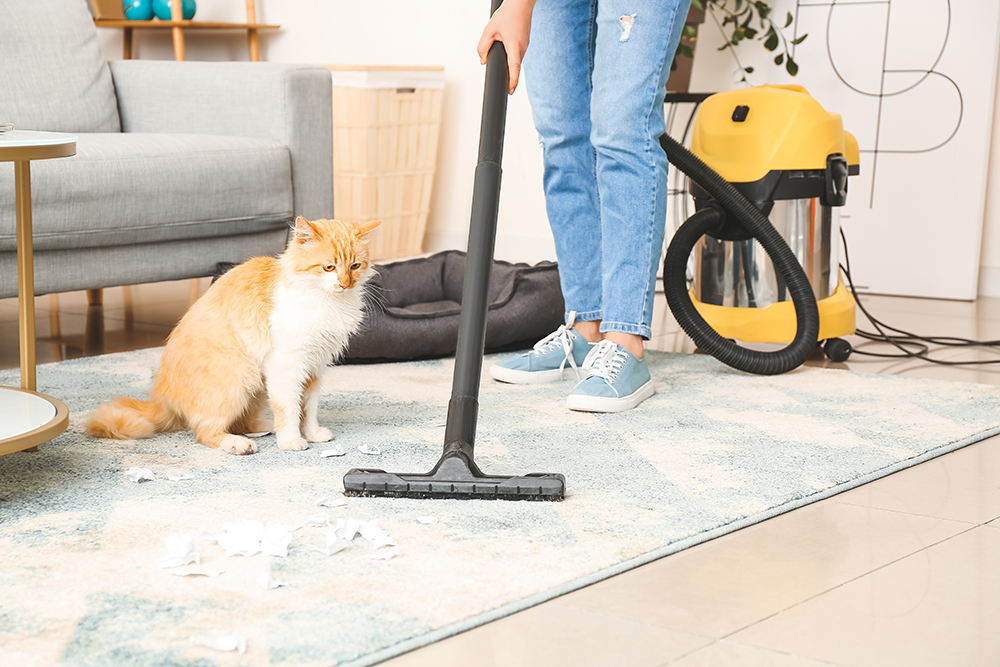
7. Maintain the Smells of Home
Moving time is an excellent cleaning opportunity, but you may want to hold off on doing a deep clean of your furniture, pet materials, and laundry until you’re established in your new home. Cats can notice the subtle scent differences between the old and new homes that we can’t, making it more difficult for them to acclimate.
It will take time for your scent to overtake the space, but you can smooth the transition by keeping everything smelling the same. Hold off on washing pet beds, litter boxes, upholstery, furniture covers, and rugs. If you give your cat a few weeks of familiar smells, they’ll be more likely to walk confidently around their new home.
Placing litter boxes at separate ends of the home can spread your cat’s scent and coax them to check out the rest of the space. You may also make them feel more relaxed by rubbing your cat’s cheeks with a soft, clean cloth and rubbing it on various surfaces around the house.
Your cat’s cheeks have glands that distribute their pheromones, and spreading the scents on areas like furniture, entryways, and walls can make the home seem more familiar.
8. Use Pheromones and Other Calming Aids
When you’ve optimized the space to help your cat adjust to the smaller home, you can help them overcome any lingering stress with atmospherics. Pheromone diffusers like Feliway calming diffusers are popular with cat owners trying to ease signs of anxiety.
Even easier, you can hop on YouTube to play cat-specific music. Blending purring and suckling noises against soothing ambient tones, cat-specific music is a proven stress-reducer in clinical settings. It may be the perfect calming aid to help your cat become more relaxed in the strange new environment.
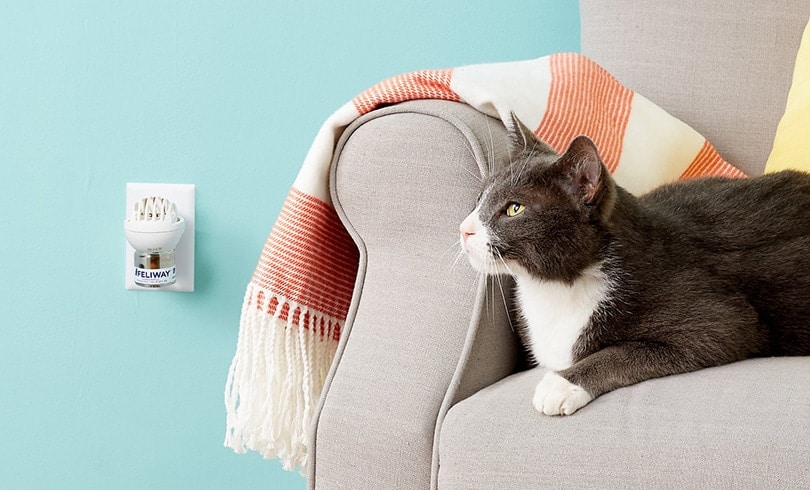
9. Stay Positive
Relocating to a smaller home can be stressful for everyone. While you’re attending to your cat, you must also monitor your feelings during the move. Staying positive will help your cat ease into the transition.
Cats are highly receptive to human emotion and respond accordingly. When you’re stressed, they may get stressed, and when you’re calm and positive, they’ll be more comfortable and ready to settle into the new home.

Conclusion
Making a move with pets to a smaller space comes with numerous challenges, and a frantic cat thrown in the mix can make them much more difficult to manage. Fortunately, the solutions are straightforward. Make the space familiar, offer positivity and affection, and, more than anything, be patient. Your cat will adjust at their pace, and giving them space and understanding will help them get there as quickly as possible.
Featured Image Credit: Vladislav Karpyuk, Shutterstock






